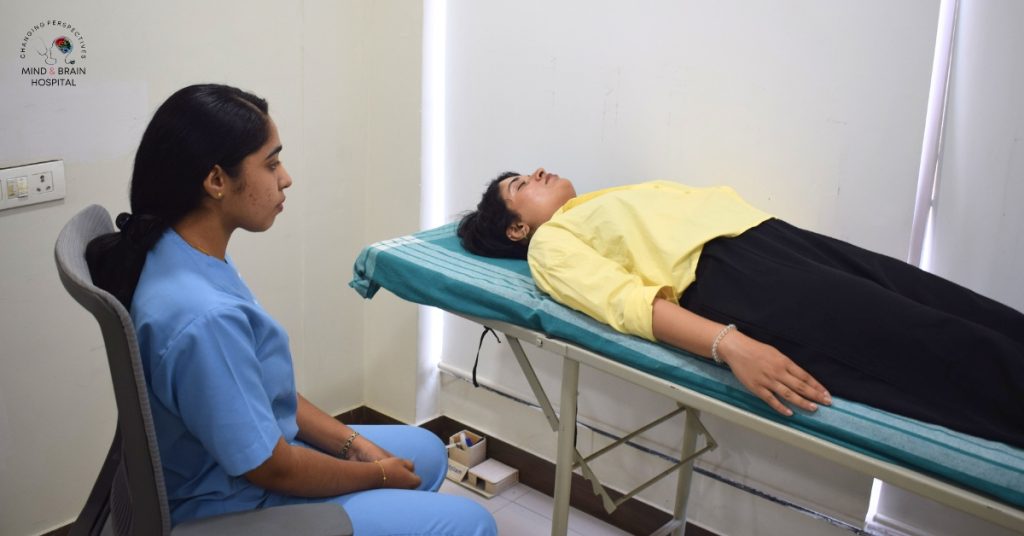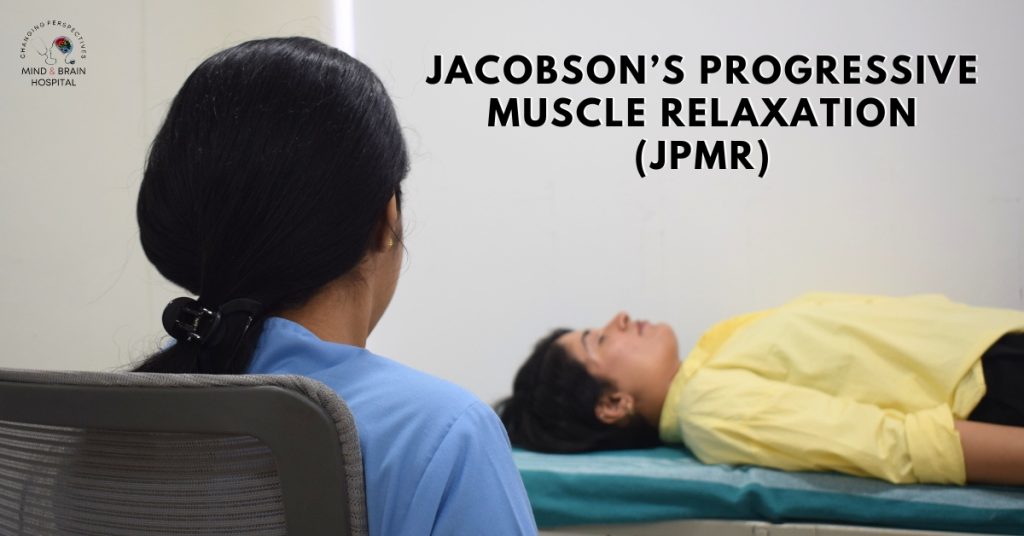Introduction: What is JPMR?
In our modern world, stress has become an unwelcome companion, affecting our well-being. To combat this, numerous relaxation techniques have emerged, and one such method is Jacobson’s Progressive Muscle Relaxation (JPMR). In this brief blog, we delve into the origins of JPMR, its benefits, and how you can integrate it into your daily routine for a more serene and harmonious life.
How does JPMR work?
JPMR works by systematically tensing and relaxing muscle groups, reducing muscle tension and promoting deep physical and mental relaxation, which can help alleviate anxiety and stress. This relaxation technique enhances self-awareness and helps individuals recognize and release unnecessary muscle tension. By engaging in the deliberate sequence of muscle contraction and release, JPMR taps into the mind-body connection, promoting a state of calmness and providing individuals with a sense of control over their physiological responses. Regular practice of JPMR can lead to improved stress management, reduced anxiety levels, and an overall sense of well-being.
Benefits of JPMR:
JPMR offers an array of benefits for both physical and mental health. By sequentially tensing and relaxing specific muscle groups, JPMR helps individuals develop an enhanced awareness of their body’s response to stress and tension. This heightened awareness serves as a valuable tool for managing anxiety, reducing muscle tension, and promoting overall relaxation.
Research has shown that regular practice of JPMR can yield numerous positive outcomes. It has been found effective in reducing symptoms of anxiety disorders, insomnia, and chronic pain. Furthermore, JPMR has been observed to improve overall psychological well-being, leading to increased self-control, improved concentration, and better coping mechanisms during stressful situations.

Implementing JPMR into your daily routine is a simple and accessible process. Follow these steps to get started:
1. Find a quiet and comfortable space where you can relax without interruptions.
2. Close your eyes and take a few deep breaths to center yourself.
3. Begin by focusing on a specific muscle group, such as your hands or feet.
4. Slowly tense the muscles in that group for 5-10 seconds, feeling the tension build up.
5. Release the tension suddenly and completely, allowing the muscles to relax and unwind.
6. Take a moment to experience the sensations of relaxation before moving on to the next muscle group.
7. Gradually work your way through your entire body, moving from one muscle group to another, repeating the tension-release cycle.
Remember to start with the muscles in your face, jaw, neck, shoulders, and then progress downwards, including your arms, chest, abdomen, back, and legs. The key is to focus on each muscle group individually, allowing yourself to fully experience the contrast between tension and relaxation.
Jacobson’s Progressive Muscle Relaxation is a valuable technique for managing stress, anxiety, and promoting overall relaxation. With its origins rooted in the research of Dr. Edmund Jacobson, JPMR has garnered recognition for its ability to alleviate muscle tension, enhance self-awareness, and improve mental well-being. By integrating JPMR into your daily routine, you can unlock a path towards tranquility and a more balanced life.
Written by Neha Gurung and Varshini
References:
1.Jacobson,E.(1938).Progressive Relaxation: A Physiological and Clinical Investigation of Muscular States and Their Significance in Psychology and Medical Practice. University of Chicago Press.
2.Harvard Health Publishing. (2020). Relaxation techniques: Breath control helps quellerrant stress response. Harvard Medical School. https://www.health.harvard.edu/mind-and-mood/relaxation-techniques-breath-control-helps-quell-errant-stress-response
3.Jain, S., Shapiro, S. L., Swanick, S., Roesch, S.



I enjoyed reading this and learned something new. Your perspective on this topic is refreshing! This post is really informative and provides great insights! Thank you for breaking down complex concepts so clearly. This blog stands out among others in this niche. The examples provided make it easy to understand. I’m definitely going to share this with my friends. I enjoyed reading this and learned something new. This blogpost answered a lot of questions I had. This article is a treasure trove of information!